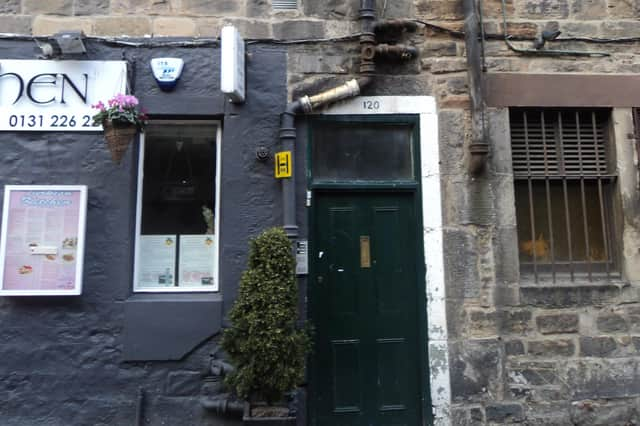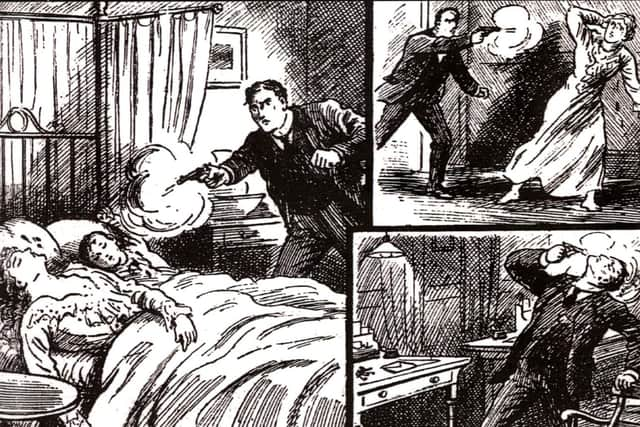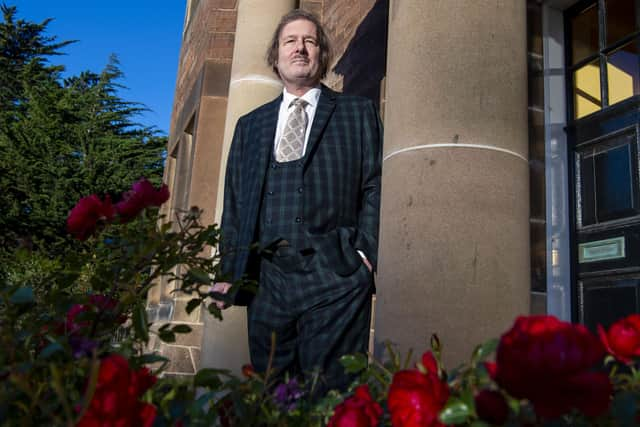Murder Houses of Edinburgh, by Jan Bondeson, part four - A Rose Street house of horror


It is today known for its many bars and pubs but back in Victorian times, blood and not beer stained the Rose Street cobbles: a street for the poor, and home to various needy and desperate characters, it was several times visited by the fell spectre of Murder.
In 1863, the chimney sweep Thomas Skirving beat his wife to death with a poker at 122 Rose Street; he was found guilty of murder and sentenced to imprisonment for life. Three years later, the retired sergeant major James Boyd was suspected of murdering his wife at 15 Rose Street. In 1882, a certain Mrs Gibson stood accused of murdering an old woman named Jessie Reid in the sunk flat at 43 Rose Street.
Advertisement
Hide AdAdvertisement
Hide AdIn 1929, the picture frame finisher James Brown Marr was found guilty of the culpable homicide of Mary Ann Mills at 114 Rose Street North Lane, and sentenced to penal servitude for 12 years. The original three-story vernacular houses in Rose Street, much less grand than those in the surrounding streets, have been severely decimated by the passage of time and the construction of large and ungainly buildings wholly unsuited to the area. But although the four murder houses listed above are all gone, the main Rose Street house of horrors still frowns upon the passer-by...


Joseph Wilmot was born in Oakham, Rutland, in 1889. He joined the army as a young man and served three years as a batman and waiter in the Royal Field Artillery, with an exemplary record, before being discharged in 1912 and becoming a miner in Cockenzie, East Lothian. Here he met Annie Grant, the daughter of a fellow miner, and married her in September 1912. They soon had a healthy son named William, born in Cockenzie in June 1913.
At the outbreak of the Great War, Wilmot was called up as an army reservist, but he was found medically unfit for service. He instead became a fitter’s labourer at the North British Railway and moved into the top flat at 120 Rose Street South Lane, consisting three rooms, a kitchen, and two small lumber rooms. His second son Charles
was born here in December 1916. But by this time, all was not well with Wilmot’s health.
Advertisement
Hide AdAdvertisement
Hide AdAlthough still a young man, he complained of unsteadiness on his legs and a feeling of paralysis. In February 1917, he had to give up his work, and was left with five shillings per month from the insurance company, not even enough to pay the rent. Since his wife nagged him and the children went hungry, he was becoming increasingly desperate.


The butcher Duncan Forbes lived in the second flat at 120 Rose Street South Lane, just below the Wilmots. On May 28 1917, he heard a strange sound from above stairs, like if some person was walking about and breaking coal in the upper flat. The following day, Joseph Wilmot was nowhere to be seen, nor did his family stir. Two days later, when Constable Alexander Mackenzie was on patrol in Castle Street, Glasgow, Wilmot came up to him and said that he had murdered his wife and two sons in Edinburgh.
He was taken to the police office, where he explained that he had hit Annie on the head with a hammer and cut her throat with a razor, before treating William in a similar manner and smashing the baby’s skull in with the hammer. He carried an empty whisky bottle and smelt of drink, saying that he had intended to leap into the canal, but was worried that some person was watching him.
The Edinburgh detective Alexander Little received notice from Glasgow on May 30 that Wilmot had been captured. He went to 120 Rose Street South Lane, where he found the three bodies in a bloodbath; since there were no sign of a struggle, they had clearly been murdered in their sleep. Wilmot had written letters to his parents in Melton Mowbray, and to the Edinburgh police, telling them that he had murdered his wife and sons, and that his body would be found in a canal in Glasgow, but since he had never posted them, they were found in his pocket.
Advertisement
Hide AdAdvertisement
Hide AdOn trial for murder at the High Court in August 1916, the defence council of Joseph Wilmot did not have a leg to stand on, since the prisoner stood convicted by his own admissions to the police. But Dr Harvey Littlejohn, professor of forensic medicine, who had carried out the autopsies on the three victims, had also examined the murderer himself. He found evidence that Wilmot suffered from locomotor ataxia, a disagreeable disease of the spinal cord causing jerky and unsteady walking, that was sometimes a sign of tabes dorsalis caused by tertiary syphilis.
He also considered that the Rose Street desperado had not been of sound mind when he murdered his wife and sons, and the court followed his advice: Wilmot was found guilty of murder but insane at the time, and was ordered to be detained during the King’s pleasure. He died at the Lunatic Department of HM Prison Perth on September 10 1926, aged just 36, from disseminated [multiple] sclerosis and asthenia according to his death certificate.
To discover the tragic stories behind more of the Capital’s murder houses, read The Murder Houses of Edinburgh, by Jan Bondeson, published by Troubador, £12.99 and available here
A message from the Editor:
Thank you for reading this article. We're more reliant on your support than ever as the shift in consumer habits brought about by coronavirus impacts our advertisers.
If you haven't already, please consider supporting our trusted, fact-checked journalism by taking out a digital subscription
Comment Guidelines
National World encourages reader discussion on our stories. User feedback, insights and back-and-forth exchanges add a rich layer of context to reporting. Please review our Community Guidelines before commenting.